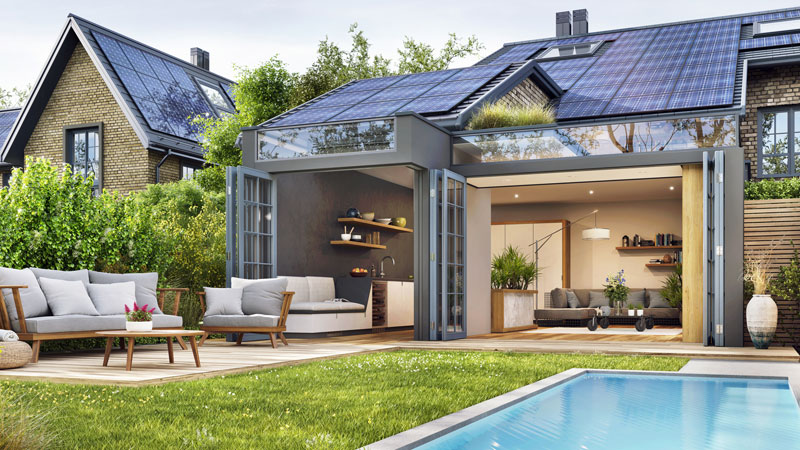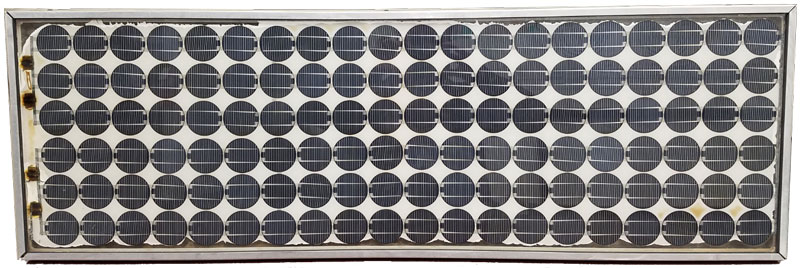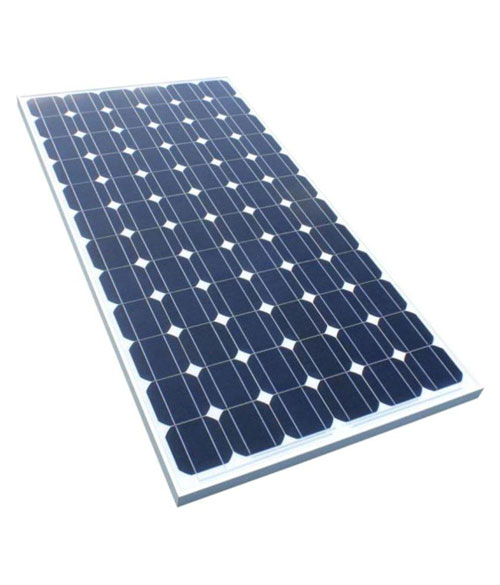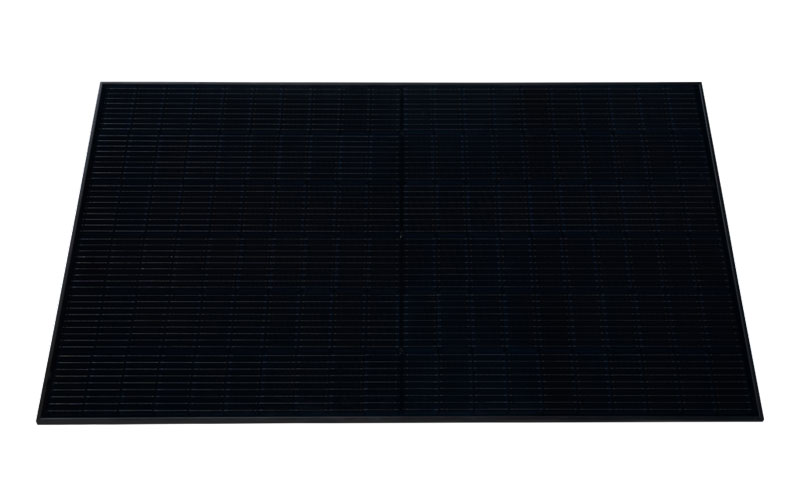1: Solar panels don’t always produce as much power as they are supposed to.
The sun is always shining somewhere in the world. There’s plenty of light in the sky, but does solar catch it all? Depending how your system is built, or what type of panels you buy, it may not. There are a few reasons this might happen.
- Panel placement. When installers propose a design, it’s based on maximizing production for the whole system. Every roof is different as far as sun exposure. Some panels will be star performers and others will lag, simply because they can’t all squeeze into the prime sunny spots. Annual production is what matters, not panel-by-panel, because it all adds up to what your home needs.
- Manufacturing margin of error. Panels come with a nameplate rating of how much power they are able to produce when hit with direct sunlight. For instance, our go-to Aptos 440W model is expected to crank out four hundred and forty watts per hour of direct sunlight any given day. But, some panels might come off the factory line able to produce 442W, or even 444W. This could create the impression that some of your 440W panels are “underproducing” compared to their immediate neighbors, but that’s not the case. Miniscule differences like this will rarely be noticeable, let alone impact your power bill, but it is something to be aware of if you’re watching your monitoring app like a hawk.
- Expected losses through wiring. A good solar installer plans out the optimal wiring path for safety and efficiency. But, electricity doesn’t like to travel long distances, and will always drop a little during the DC to AC conversion before you can use it. This is planned for in the design prior to installation, but real-world circumstances have to be adjusted for, so keep that in mind if you have large roof spaces for conduit to cross, or trenching across long distances between separate structures that hold your arrays.
With a partner like ESP, you’ll find that our design team and install crews are second-to-none for efficiency and know-how. You’ll get a highly-performing system on the roof, with lifetime access to monitoring and customer service. So you don’t have to wonder if it’s working – you can see for yourself anytime and get help if you think something is off.
2: Solar panels are ugly and make your roof look like an industrial power plant.
One of the worst feelings is hiring a contractor to work on your home, and ending up with something you can’t be proud of showing off.
Like we said, not all solar panels are created equal. Check out this circa-1979 solar panel, one of the first to be deployed en masse in the United States:
Yeah, sure, vintage is “in”, but… you might not want a couple dozen of those on your roof.
Now let’s take a look at a generic solar panel used in modern commercial or utility-scale installs. Check out how those aesthetics stack up:
Maybe a little better, but… is it going to match your roof? Do you have blue shingles?
Now compare that to our black-on-black residential solar panel:
Big improvement, right? Sleek and sexy for the win.
We’ll tell you where the panels will work the best, and then work with you on where they’ll look the best on your home. Your roof cannot be in better hands than with ESP!
3: Solar is expensive, and taking on debt is bad.
No matter what ads on the internet tell you, solar isn’t free. And trying to get away with cheap solar always ends up costing more in the long run, to clean up after corners get cut. Recognize the importance of investing in “solar done right” from a company that will stick around. And the truth is, it can sometimes seem like a big number.
Consider this: how much money are you going to spend on your electric bill? Think of your last year’s worth of power. How much did it total up to be? Do you know how much the power company has raised everyone’s rates in the last 5 or 10 years?
What would you rather have done with that money? What would you do with over 20 times that number saved up?
You bought your home so that you could stop paying a rent check. A mortgage isn’t “bad debt” because it’s something you use every day, and it has a final payment somewhere down the road. Solar is the same thing. Stop paying a power bill and start investing in your home.
4: Solar won’t increase the value of my home – in fact, it’s harder to sell a home with solar on it.
As we’ve said before, not all solar is created equal. If the installer did a sloppy job, it could detract from the visual appeal for potential buyers. Or, it could be something you can’t see from the outside, like the fine print on a lease. And sometimes appraisers or inspectors simply don’t know how to calculate what solar does, so they just write “zero”. These will all do more harm than good, as far as resale value goes.
Here’s the good news – the real estate industry is getting more savvy about solar. There are a number of studies that show solar improving home value. Best of all, the value is often proportional to the investment or higher, unlike other renovations such as tearing up your kitchen or bathroom. Ask your lender if they have a green-certified appraiser to properly evaluate your home with all the energy-efficiency upgrades. We may be able to refer you to one if needed!
Furthermore, ESP is part of the exclusive Pearl Certification network. Every installation comes with documents you can hand off to a realtor or appraiser if you’re refinancing or selling. Many of our customers who have sold their homes paid off the remainder of the solar loan, with cash to spare.
5: The ROI numbers don’t pan out; you’ll move before you break even.
In the past, solar systems took 25 years or more to get the numbers to jive. Even today, if you live in an area with very low utility rates, it could take a while for the math to look good. If you plan to move in the next year or two, it’s unlikely that solar is the best use of your money.
Now, when it comes to calculating return on investment, you have to consider apples to apples. So, what’s the ROI on a rent check? That’s a 100% bona-fide never. Even those old solar systems have a positive ROI as opposed to a nonexistent one.
Because of incentives and improved technology, the average solar customer can expect a payoff in 10 years or less. If you pay a high power bill, it’s probably closer to 5 to 7 years. Either way, your savings account will thank you while your solar-less neighbors are paying even more in a few years.
6: Utility rate increases aren’t as bad as solar companies make it seem.
In most parts of the country, the power company is either a corporation or a co-op. As demand grows, they will adjust to remain operational, but they aren’t going to double your rates overnight. And if you don’t use gigawatts of juice, you may not have much to worry about, in the grand scheme of things.
But let’s get real. Has your power bill ever gone down? (That is, without you turning off every breaker in the house.) How many times in the last 10 years have you been notified of impending savings from the power company, as opposed to impending rate hikes? Do you want to pay 5-10% more on your bill every year, or do you want to get rid of it entirely?
The utilities in California are among the most expensive in the entire country, and they will continue to request rate hikes from the Public Utilities Commission as often as they can. If you’re keeping the lights on with rates like these, you can definitely afford solar. Reinvest in yourself instead of letting a corporation extract from you to line their investors’ pockets.
7: Utilities can’t take renewable energy onto the grid without destabilizing it. We’ll never have 100% renewable power.
It’s true – we have an infrastructure problem in the United States. Over 120,000 thousand miles of power lines criss-cross the country. The primary expected use for many decades was, and still is, to distribute power from huge plants over hundreds of miles. Solar is intermittent and sometimes unpredictable, and will catch the power companies off-guard when they have to move all that sunshine somewhere.
But here’s the thing: if your house becomes a micro-power-plant by installing solar, especially with a storage system, you’re reducing the strain coming and going. Your home uses power during the day and provides a little extra to your neighbors; you’re keeping it local. With battery storage, you can keep most of it for your own use, and only provide it to the grid when they ask for it, so they know what’s coming.
Realistically, fossil fuels will be in the mix for a while, but its not an “all or nothing” proposition. Even if we can’t go 100% green as a society today, it’s still better to aim for 90% tomorrow, than sit around and wait for things to get worse.
8: Solar incentives don’t cover the whole cost of the system, and they’re being reduced further.
The Renewable Energy Tax Credit (IRS Form 5695) returns 30% of the total system cost as a tax credit. That’s assuming you still pay income taxes – the ugly truth is, you might not be able to claim anything. There are very sad stories of unscrupulous companies selling large solar systems to people on Social Security or disability, making them think they were getting tens of thousands of dollars. When the truth came out and the customers ended up with no tax money back from Uncle Sam, those salespeople could be long gone. Check with an accountant and get second opinions if you’re not sure how your taxable income situation will pan out.
In short, the average homeowner needs to have some way to pay for the remainder of the cost. But that’s where financing comes in, or looking at a lease or PPA option. As long as you qualify, you’re looking at a worst-case of paying around the same average monthly bill (a “bill swap”) or usually much lower. No change in your budget or lifestyle to go green.
Imagine the chance to buy your dream car for 30% off. And you’re getting a package where that car continues to save you thousands of dollars every year, without any maintenance. We did say it’s kind of a no-brainer already.
9: Advances in technology will render all past and current solar obsolete.
There is really, really fascinating research happening all over the world. Right now, scientists are working with materials you can hardly pronounce to build a future we can barely conceive of. Are we close to someone inventing a spray-on solar cell that instantly powers anything it touches? We’re right around the corner from flying electric cars, so who knows!
That being said – why wait and see? In 10-15 years, even if solar costs half as much or is twice as efficient, you will spend 10-15 years paying power bills for no reason. That’s tens of thousands of dollars for the average Californian.
Solar technology today is stable and will last for decades. Incentives are good right now. And it doesn’t look like Mother Earth has much wiggle room left for human society to drag its feet on cleaning up after ourselves. Now is the time to go renewable and sustainable. So let’s do this together!
We hope you enjoyed reading up on the facts about solar. ESP is ready to get to work with you – partner with us today!



